Electric Lit relies on contributions from our readers to help make literature more exciting, relevant, and inclusive. Please support our work by becoming a member today, or making a one-time donation here.
.
Roald Dahl holds a special place in my childhood. I still have vivid memories of reading Charlie and the Chocolate Factory and Matilda in school (we even read his rather unsavory memoir Boy; his accounts of boarding school bullying haunt me to this day!) and of watching the delightful early ’90s film adaptations of some of his better known works.
It’s no surprise his books have proven fertile ground for both sublime cinematic gems and deliriously horrid film versions.
I can still trace my love of language to his wordplay-loving novels, many of which I devoured as a young precocious kid. Take The Witches, which has just gotten yet another film adaptation. The book is terrifying all on its own given its premise, but it was the language which made me enjoy it all the more, opening up worlds I didn’t know were possible: “A real witch gets the same pleasure from squelching a child as you get from eating a plateful of strawberries and thick cream.” It’s the word “squelch” for me that truly signals why Dahl’s prose was always so wickedly revolting—and I mean that in the greatest sense. Diving into the worlds of Matilda or Charlie or James (or George, from George’s Marvellous Medicine, which my third grade class adapted into a play with yours truly in the titular role) was to enter a world where the wonder of childhood was the greatest antidote to the cruelty and capriciousness of adults. Dahl’s books never sugarcoated the ills of the world but presented them instead as dastardly evils in need of being faced and vanquished.
But with characters that include wicked witches with nasty sores on their scalps, prank-prone Twits covered in hair all over, good-natured female spiders and Big Friendly Giants, it’s no surprise his books have proven fertile ground for both sublime cinematic gems and deliriously horrid film versions.
For fun, I’ve gone ahead and ranked the many films that have tried to replicate Dahl’s wit and charm on the page. You may find the order revolting, so know it is wholly subjective and driven solely by my whims and desires. Dahl would have it no other way; I am a grown up, after all.
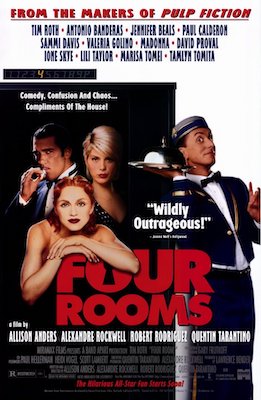
15. Four Rooms (1995)
Count me among those who never knew (or had selectively forgotten?) that Quentin Tarantino had directed a Dahl adaptation! Except, the more you learn about this ill-fated affair, the more you realize why it’s so seldom discussed. This anthology film—which features segments by Robert Rodriguez, Alexandre Rockwell and Allison Anders—is inspired by the British author’s lesser-known adult short stories. Revolving around guests staying at the Hotel Mon Signor, Four Rooms is, perhaps, like all anthology films, only as strong as its weakest entry. And well, when one segment is about a witch trying to secure semen to finalize a potion with her coven that co-stars Madonna… well, you can imagine.
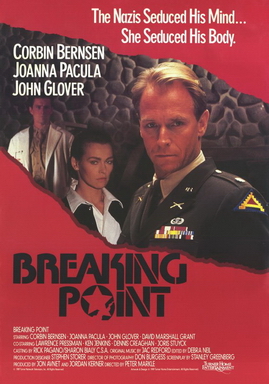
14. Breaking Point (1989)
Speaking of Dahl adaptations that rarely get talked about: this remake of an adaptation of a short story feels remarkably forgettable. Made for television, this is a competent take on Dahl’s “Beware of the Dog,” a short story about a young pilot who, after a collision, finds himself bedridden, cared for British nurses who seem very interested in his squadron’s location—a detail they insist is moot considering the war (that’d be WWII) is over. But is it? The twist in this thriller is much more effective in the span of a short story (originally printed in Harper’s) than in a full-length film, but it may well still pack a punch if you don’t see it coming from a mile away.
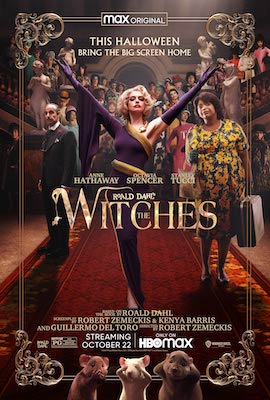
13. Roald Dahl’s The Witches (2020)
Let’s get this out of the way: the new Robert Zemeckis adaptation of Dahl’s 1983 classic may boast the author’s name in its title, but it is arguably the least Dahl-like of his filmed adaptations. With a screenplay that aims, alternately and incongruously, between being an outlandish campy remake and a grounded scary fantasy adventure, this garish-looking film ends up wasting the thematic potential of pitting a Melania-sounding Grand High Witch (Anne Hathaway channeling a “Be Best” sensibility) against a young orphaned Black boy in 1968 in Alabama who’s been turned into a mouse.. Neither ridiculous enough to pull off its attempts at absurdity nor committed enough to its ‘60s Southern backdrop, Zemeckis’s film even fails at becoming an enjoyable bad film. It limps along, firmly believing standing apart from the 1990 film of the same name is an accomplishment all on its own. Hathaway’s costumes are fab, though.
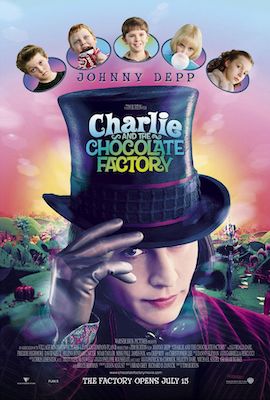
12. Charlie and the Chocolate Factory (2005)
Speaking of garish 21st-century takes on Dahl’s work, who could forget Tim Burton’s horrid adaptation of Charlie and the Chocolate Factory—no matter how hard we try? Turning the central candy maker into a pale, high-pitched loon who couldn’t help echo a certain King of Pop, Burton and star Johnny Depp keyed into Dahl’s cruelty but wrapped it in a wholly unsavory package when re-telling the story of a young, wide-eyed boy who earns a chance to visit the famed Wonka candy factory. Burton’s signature style has worn thin in recent decades, his gothic inspiration giving way to brassy CGI spectacles that feel rather weightless and toothless. This adaptation was no exception, valuing psychedelic art direction and kooky costumes over any and everything else. The line “Why is everything here completely pointless?” seems more self-aware than Burton and writer John August likely intended.
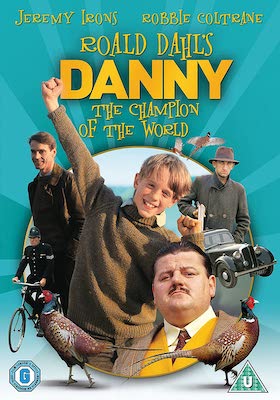
11. Danny, the Champion of the World (1989)
I’m not saying Jeremy Irons’s chiseled cheekbones alone make this take on Dahl’s story about a young kid and his pheasant poacher father endlessly watchable. But I’m also not not saying that. A tad quaint and truly the kind of British fare you’d expect for a made-for-TV movie, Danny, the Champion of the World follows Irons and his son Samuel (in the title role) as they hatch a scheme (involving the aforementioned pheasants) to stay in the land they own and foil the plans of the resident wealthy landowner who hopes to oust them for his own benefit.
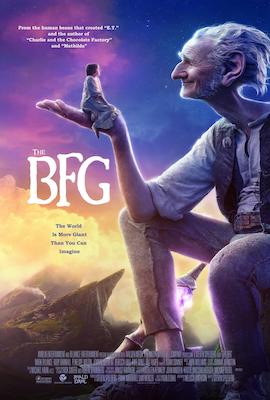
10. The BFG (2016)
It’s a shame that the bottom rung of this list is populated by great names like Zemeckis, Tarantino, Burton, Guillermo del Toro (a writer on the recent Witches), and Steven Spielberg. Yet there’s no denying that the E.T. filmmaker was always going to be an odd match with Dahl. The director’s brand of mainstream schmaltz hasn’t precluded him from making transcendent family friendly fare, but somehow the gee-whiz CGI spectacle of The BFG muddles more than elevates this take on Dahl’s classic, which had already gotten a lovely animated treatment a quarter of a century prior.
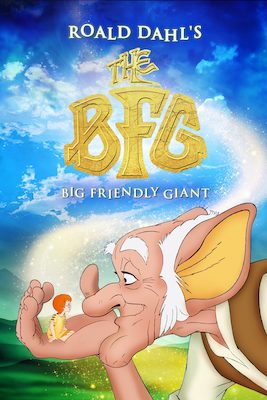
9. The BFG (1989)
I’m trying to not let nostalgia get the best of me here. I have fond memories of this animated take on the “Big Friendly Giant,” but looking back on it, the animation leaves a little to be desired. It’s not quite as slick as the great Disney fare of its time — and it feels all the more shoddy compared to Spielberg’s attempt — but there’s something to be said about its roughened edges, which are much more endearing than you’d first care to admit. Sometimes, after all, an absurd-sounding tale about a friendship between a young girl and a giant who catches dreams (and who ends up having a face-to-face with Queen Elizabeth herself!) is better suited for the malleable world of 2D animation.
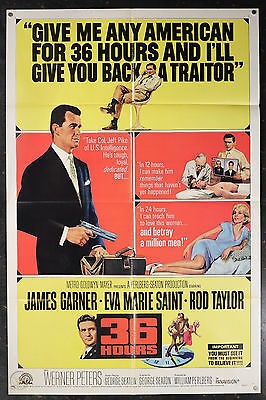
8. 36 Hours (1964)
Listen, you had me at James Garner, Eva Marie Saint, and Rod Taylor. The success of this suspenseful George Seaton take on Dahl’s “Beware of the Dog” short story arguably depends on quite a high level of suspension of disbelief (the entire plot hinges on an intelligent officer being duped into thinking years have passed since he was unwittingly captured and is now encouraged to believe it’s okay to divulge key military secrets to his secretly-German-passing-as-British abductors). But it’s ingenious if you just let yourself be taken on its wild ride.
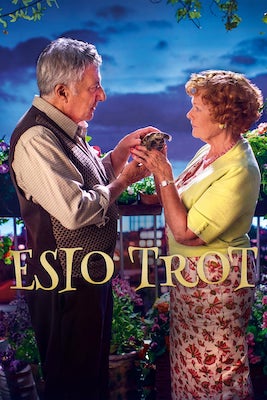
7. Roald Dahl’s Esio Trot (2015)
Proving not all Dahl’s stories revolve around horribly cruel adults, this sweet story centers on an elderly gentleman who concocts a plan to woo his downstairs neighbor with the help of a spectrum of differently-sized tortoises. That may well sound too twee, but trust the man behind British classics like Love, Actually and Four Weddings and a Funeral to bring just the right amount of sentimentality to this unlikely romcom to make it sing. Both on the page and in Richard Curtis’s amiable adaptation—which stars none other than Dame Judi Dench!—the tale of Mr. Hoppy and Mrs. Silver hums along with a sweetness that’s never too treacly.
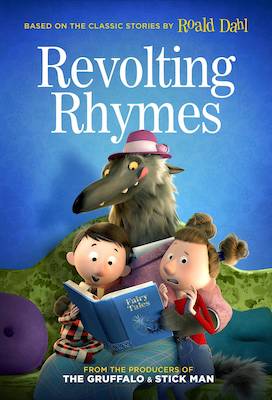
6. Revolting Rhymes (2016)
Nominated for an Academy Award for Best Animated Short Film back in 2017, this BBC production turned five of the six poems from the 1982 book into a breezy comedic take on some of your favorite fairy tales. Only don’t expect Little Red Riding Hood or Snow White to follow the scripts that have long been associated with them. Just as in Dahl’s playful poems (“The small girl smiles/Her eyelid flickers/She whips a pistol from her knickers/She aims it at the creature’s head and BANG! BANG! BANG! she shoots him … dead.”), the characters in Jakob Schuh and Jan Lachauer’s animated film turn the tables on those old-fashioned tales, remaking and refashioning them for a modern audience (spoiler alert: Red does get herself a wolfskin but the actual ending is decidedly less bloody, and much more touching, than Dahl’s original poem).
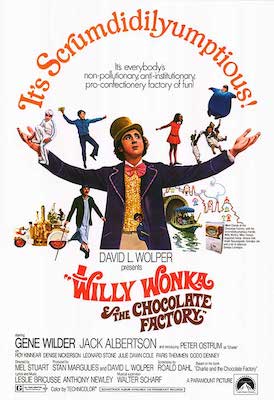
5. Willy Wonka & the Chocolate Factory (1971)
You’d be forgiven for thinking this family classic should rank higher—or possibly lower. Your mileage will vary depending on whether you fall into the “it’s an undisputed classic” camp or into the “it’s an aberration Dahl himself rebuked” one instead. Both are true! The best aspects of this musical adaptation of Dahl’s 1964 novel are the very things the author disavowed: its leading man (Gene Wilder) and its hummable songs (especially “Pure Imagination”). Those two decisions softened the edge of Dahl’s plot about the eccentric candymaker and, in the process, made the chocolate factory tour more saccharine than it reads on the page; Wilder is definitely off-kilter, but there’s a warmth to him that makes him endearing rather than terrifying. With his signature purple suit and hat, Wilder’s Wonka has become an icon (and a meme!) in his own right, eclipsing, perhaps, Dahl’s initial concept for the reclusive character. Nevertheless, there’s no denying that the film’s endurance has led many a film fan to get lost not just in Mel Stuart’s kitschy Wonka factory, but in Dahl’s book and sequel.
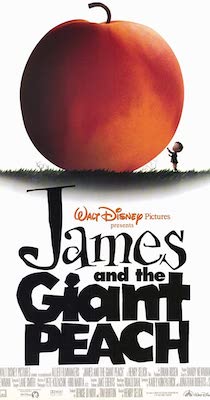
4. James and the Giant Peach (1996)
Before the peach became an emblem for thirst and class warfare on screen (see: Call Me By Your Name and Parasite, respectively), it was most iconically associated—in my head, at least—with this classic Roald Dahl tale. And while I admit I’ll never again be able to read this title without a certain emoji, and its many associations, coming to mind right away, that shouldn’t take away from the whimsical animated film that first made me fall in love with James in the first place. With a whimsy that feels of a piece with Dahl’s greatest writing, Henry Selick (he of Nightmare Before Christmas fame) made the many outrageous characters that populate this fable about a boy eager to rid himself of the horrid aunts who care for him (including a talking spider voiced by Susan Sarandon and a a centipede voiced by Richard Dreyfuss) feel both ridiculous and heartwarming in equal measure.
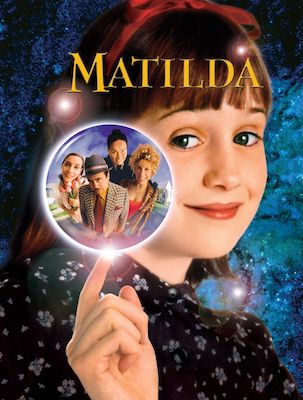
3. Matilda (1996)
If you were a bookworm growing up (and perhaps even if you remain one), there was something rather radical about Matilda, book and character alike. Here, after all, the penchant for stories and the hunger for reading were cast as central to a young girl’s budding magical powers. Matilda’s precocity may be cause for disdain by her parents, but to Dahl, it was key to her strength. Plus, she knew how to play a mean prank. With Mara Wilson in the title role, director Danny DeVito (yes, really) found the perfect girl to capture the giddiness of Dahl’s heroine without losing any of her bite. Moreover, DeVito’s fascination with black comedy (see Throw Momma from the Train and The War of the Roses) meant he didn’t shy away from the darker edges of this otherwise family-friendly affair.Pam Ferris’s cruel headmistress Agatha Trunchbull remained just the right mixture of appalling and absurd, anchoring, along with DeVito’s Harry Wormwood and Rhea Perlman’s Zinnia Wormwood that most insidious and dangerous of adults Dahl could envision: joyless anti-intellectual grown-ups with children in their care.
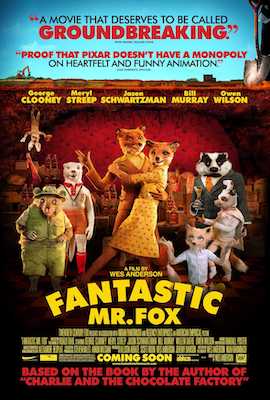
2. Fantastic Mr. Fox (2009)
Given Dahl’s wild imagination, it’s no surprise his work pairs so well with animation. Still, if you’d told me Wes Anderson, he of Rushmore and The Royal Tenenbaums fame, would helm one of my favorites—and, arguably, one of the best—Dahl adaptations around, I wouldn’t have believed you. Yet Anderson’s exacting visual formalism (he’s never met a symmetrically framed shot he dislikes) and his self-serious twee sentimentality made for a remarkably good fit for this stop-motion take on Fantastic Mr. Fox, which boasts the voice work of the likes of George Clooney, Meryl Streep and Anderson staples like Bill Murray, Jason Schwartzman, and Owen Wilson. Offering a decidedly playful and sly take on Dahl’s fable that nevertheless spoke to the filmmaker’s signature themes (a father-son relationship is here central in a way it is not in the book, for instance), Anderson managed to make this story about a wily fox intent on outwitting three farmers intent on capturing him into a film about the anxieties of family life and the weighted expectations of growing up.
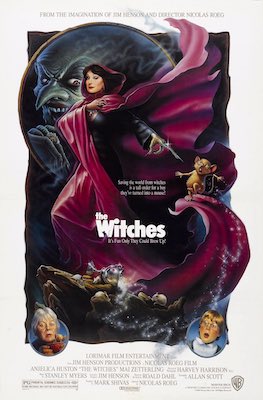
1. The Witches (1990)
Is it unfair to reduce the success of The Witches to Anjelica Huston’s divine performance as the Grand High Witch? Perhaps, but the Academy Award winner’s take on Dahl’s masterful creation is arguably what both grounds and elevates this adaptation. Yes, the film does give us a more traditional happy ending than Dahl envisioned for his boy-turned-mouse protagonist, but in Nicolas Roeg’s hands, this 1990 adaptation really revels in the dark fantasy elements that have made The Witches such a lightning rod of a book. The image of Huston’s monstrous true face, with her elongated nose and sore-filled scalp, is one of the rare instances in which a live action riff on Dahl has felt as much an homage to his deliciously dastardly prose as to Quentin Blake’s iconic illustrations. Add in Jim Henson’s puppet work, which feels now like a welcome lo-fi take on special effects, and you’ve got a truly terrifying family film that’s sure to scar you in all the right ways. If you haven’t caught it, let me just quote Huston’s witch: “You’re in for a treat!”
